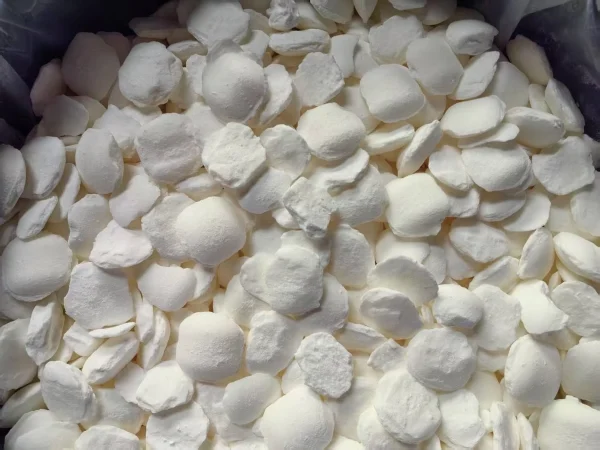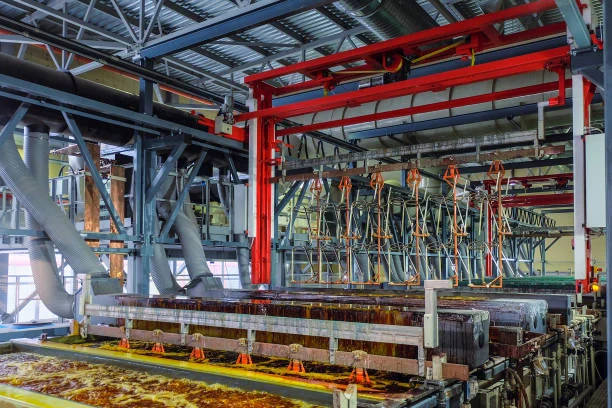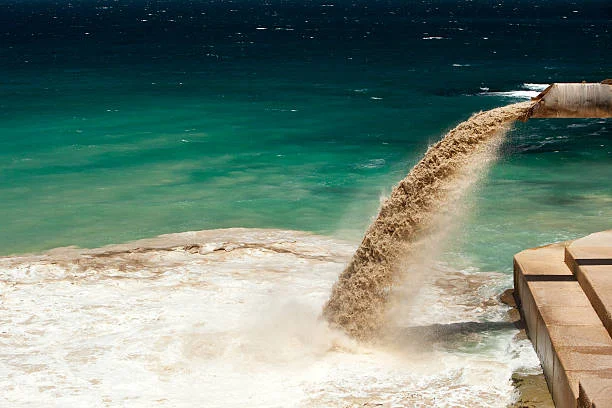
1. Introduction
The Cyanide heap leaching gold extraction process is widely used in the gold mining industry due to its advantages such as simplicity, low cost, and applicability to low - grade ores. However, as cyanide is a highly toxic substance, strict safety production technical specifications must be followed to ensure the safety of personnel, the environment, and the normal operation of the production process. The "Safety Production Technical Specifications for Cyanide Heap Leaching Gold Extraction Process" (YS/T 3019 - 2013) was implemented on March 1. 2014. which provides clear guidelines for the production and on - site testing of this process.
2. Basic Requirements for Safety Production
2.1 Site Selection and Layout
Geological Conditions: The site for cyanide heap leaching should be selected on stable ground with good geological conditions. Avoid areas prone to landslides, mudslides, and flooding. Geological surveys should be carried out in advance to evaluate the stability of the site.
Distance from Sensitive Areas: The heap leaching site should be located at a sufficient distance from residential areas, water sources, and other sensitive areas. Specific distance requirements should comply with relevant environmental and safety regulations. For example, it should be at least [X] meters away from residential areas to prevent the impact of toxic gas and liquid leakage on residents.
Layout Design: The layout of the heap leaching site should be reasonable. The areas for ore stacking, solution circulation, gold recovery, and waste disposal should be clearly divided. Adequate space should be reserved for equipment installation, operation, and maintenance. Safety passages and emergency evacuation routes should be set up to ensure the smooth evacuation of personnel in case of emergencies.
2.2 Equipment and Facility Safety
Anti - Seepage Facilities: The bottom and surrounding of the ore heap should be equipped with reliable anti - seepage facilities to prevent the leakage of cyanide - containing solutions into the soil and groundwater. High - density polyethylene (HDPE) geomembranes or other high - quality anti - seepage materials can be used. The anti - seepage layer should be inspected regularly for any damage or leakage.
Liquid Storage and Transportation Equipment: Tanks, pipelines, and pumps for storing and transporting cyanide - containing solutions should be made of corrosion - resistant materials. Regular inspections should be carried out to check for corrosion, leakage, and other potential safety hazards. All liquid storage and transportation equipment should be equipped with overflow prevention devices and emergency shut - off valves.
Ventilation and Exhaust Systems: In areas where cyanide - containing operations are carried out, effective ventilation and exhaust systems should be installed to ensure the dilution and removal of toxic gases. Ventilation volume and exhaust rate should meet the requirements of relevant standards to maintain a safe working environment.
2.3 Safety Management System
Establishment of Safety Regulations: Mining enterprises should establish a complete set of safety regulations and operating procedures for the cyanide heap leaching process. These regulations should cover all aspects of production, including equipment operation, maintenance, cyanide management, and emergency response.
Employee Training: All employees involved in the cyanide heap leaching process should receive regular safety training. The training content should include the properties and hazards of cyanide, safety operation methods, emergency response procedures, and the use of personal protective equipment. Employees should be trained and qualified before they are allowed to work.
Safety Monitoring and Inspection: Regular safety monitoring and inspections should be carried out in the production process. Monitoring items include the concentration of cyanide in the air and solution, the integrity of anti - seepage facilities, and the operation status of equipment. Inspection records should be kept for future reference, and any safety hazards found should be rectified in a timely manner.
3. Operation Technical Specifications
3.1 Ore Pretreatment
Crushing and Granulation: Most ores need to be crushed to an appropriate particle size before heap leaching. Generally, the particle size should be crushed to 25.4 mm or finer to expose the gold in the ore and improve the gold recovery rate. For ores with poor permeability and high clay content, granulation technology can be used. During granulation, an appropriate amount of lime should be added to adjust the pH value of the ore to between 9.5 - 10.5. At the same time, the concentration of Sodium cyanide in the granulation process should be controlled according to the properties of the ore, generally about 60 - 150 grams per ton of gold ore. The total moisture content of the pellets should generally not exceed 30% to avoid the pellets from being loose and soft. The curing time should be more than 72 hours. In case of rain during pelletizing, the pellets must be covered to prevent gold loss.
Quality Control of Pretreated Ore: The quality of the pretreated ore should be strictly controlled. Regular sampling and analysis should be carried out to ensure that the particle size, pH value, and other indicators meet the requirements of the heap leaching process. Only qualified pretreated ore can be used for heap building.
3.2 Heap Building
Site Preparation: Before heap building, the site should be cleaned and leveled. A slope of 3% - 5% should be set for flat ground to facilitate the drainage of leaching solutions. After leveling, anti - seepage treatment should be carried out on the site. A cushion layer about 0.5 m thick can be laid on the compacted foundation, and then sprayed with sodium carbonate solution to enhance its anti - seepage performance.
Heap Height and Shape: The initial height of the ore heap should not be too high, preferably 3 - 4 meters. As the leaching rate stabilizes, the height of the ore heap can be appropriately increased. The shape of the ore heap should be designed to ensure good solution distribution and gas permeability. Generally, a conical or stepped - shaped ore heap is commonly used.
Surrounding Protection: Flood drainage ditches should be set around the heap leaching site to prevent rainwater from entering the ore heap and diluting the leaching solution. At the same time, protective fences should be set up around the ore heap to prevent unauthorized personnel from entering the dangerous area.
3.3 Spray Leaching
Spray Concentration Control: The concentration of Sodium Cyanide in the spray solution should be adjusted according to the leaching stage. At the initial stage of leaching, due to the complex composition of the gold ore, the concentration of sodium cyanide can be appropriately increased. After the peak period (when the leaching gold concentration is the highest), it can be reduced to 0.08% - 0.06%. In the later stage, it can be further reduced to 0.04% - 0.02%. The sodium cyanide concentration can be adjusted at any time according to the gold concentration of the pregnant liquid.
Spray Cycle and Intensity: The spraying time is generally 7 - 8 hours a day, and at most it should not exceed 10 hours (but the amount should be reduced). Generally, a spraying pattern of "spray 1 stop 1" or "spray 1 stop 2" is adopted. The spraying time should not be too long to allow the ore heap to breathe oxygen when not spraying. The spray intensity should be controlled at 6 - 20 L/m²•h, and the maximum should not exceed 25 - 30 L/m²•h. If the spray intensity is too large, the volume of the pregnant liquid will increase, the gold concentration will be diluted, and the adsorption capacity of activated carbon will be affected.
3.4 Gold Recovery from Pregnant Liquid
Common Gold Recovery Methods: The common methods for recovering gold from cyanide - containing pregnant liquid include carbon adsorption (such as carbon - in - column method), zinc cementation (Merrill - Crowe method), and solvent extraction. Each method has its own characteristics and application scope. For example, in the carbon - in - column process, the cyanide leach solution is pumped upward through columns at a flow rate of 15 to 25 gpm/ft², fluidizing the packed bed of activated carbon (16 × 30 mesh) to adsorb gold.
Operation and Control of Gold Recovery Equipment: The operation of gold recovery equipment should be strictly in accordance with the operating procedures. Regular inspection and maintenance of equipment should be carried out to ensure its normal operation. Parameters such as the adsorption capacity of activated carbon, the precipitation efficiency of zinc powder, and the extraction rate of solvent should be monitored and adjusted in a timely manner to improve the gold recovery rate.
3.5 Waste Ore Pile Treatment
Disinfection of Waste Ore Piles: After the completion of the leaching process, the waste ore piles should be disinfected to reduce the toxicity of residual cyanide. Common disinfection methods include the use of oxidants such as hydrogen peroxide or calcium hypochlorite. The disinfection time and dosage should be determined according to the actual situation of the waste ore piles to ensure that the residual cyanide concentration meets the environmental discharge standards.
Unloading and Disposal of Waste Ore Piles: After disinfection, the waste ore piles can be unloaded and properly disposed of. The disposal method should comply with relevant environmental regulations. For example, the waste ore can be used for backfilling in mines or transported to a designated waste disposal site for disposal.
4. Emergency Response Measures
4.1 Emergency Plan Establishment
Mining enterprises should formulate a complete emergency response plan for potential accidents in the cyanide heap leaching process, such as cyanide leakage, fire, and explosion. The emergency plan should include emergency response organizations, responsibilities of each member, emergency response procedures, and emergency rescue measures.
4.2 Emergency Rescue Equipment and Materials
Sufficient emergency rescue equipment and materials should be prepared, such as gas masks, chemical protective clothing, first - aid kits, neutralizing agents for cyanide, and fire - fighting equipment. These equipment and materials should be regularly inspected and maintained to ensure their normal use in an emergency.
4.3 Emergency Drills
Regular emergency drills should be carried out to improve the emergency response capabilities of employees. The drill content should cover various possible accident scenarios, such as cyanide leakage drills and fire - fighting drills. Through emergency drills, employees can be familiar with emergency response procedures and improve their ability to deal with emergencies.
5. Conclusion
The safety production of the cyanide heap leaching gold extraction process is of great significance. By strictly following the safety production technical specifications, strengthening safety management, and implementing scientific operation techniques, the safety risks in the production process can be effectively controlled. This not only ensures the safety and health of employees and the ecological environment but also promotes the sustainable development of the gold mining industry. Mining enterprises should always keep safety in mind and continuously improve their safety production levels to achieve the goal of safe and efficient production.
- Random Content
- Hot content
- Hot review content
- Flexible Customer and Supplier Relations Specialist (Location: Nigeria)
- Sodium Isobutyl Xanthate SIBX 90%
- Dithiophosphate 25S
- Cyanoacetic acid 99% Powder
- Sodium Metasilicate Pentahydrate
- Isobutyl vinyl ether 98% high purity certified Professional producer
- Adipic acid 99% used as the material of nylon 66
- 1Discounted Sodium Cyanide (CAS: 143-33-9) for Mining - High Quality & Competitive Pricing
- 2Sodium Cyanide 98% CAS 143-33-9 gold dressing agent Essential for Mining and Chemical Industries
- 3Sodium Cyanide 98%+ CAS 143-33-9
- 4China's New Regulations on Sodium Cyanide Exports and Guidance for International Buyers
- 5Anhydrous Oxalic acid 99.6% Industrial Grade
- 6Oxalic acid for mining 99.6%
- 7Reagent Grade/Industrial Grade Hydrochloric Acid min.31%
- 1Sodium Cyanide 98% CAS 143-33-9 gold dressing agent Essential for Mining and Chemical Industries
- 2High Quality 99% Purity of Cyanuric chloride ISO 9001:2005 REACH Verified Producer
- 3 High-Quality Sodium Cyanide for Leaching
- 4Powdery emulsion explosive
- 5Industry Grade Electron grade 98% Sulfuric Acid H2SO4 Sulphuric Acid Battery Acid Industrial Sulfuric Acid
- 6Colloidal emulsion explosive
- 7sodium hydrosulfide 70% flakes used Mining Industry












Online message consultation
Add comment: